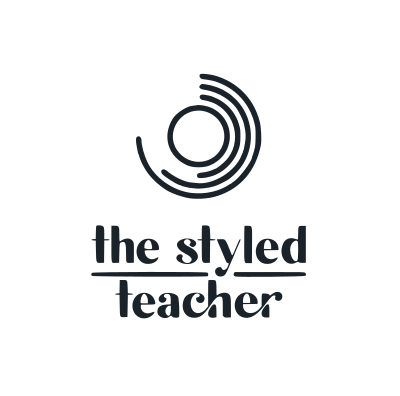Personalized learning is a powerful and fast-growing trend in education, that allows to create modern learning experiences accommodating individual needs of each student. The rise of ever-evolving technology is paving the way for personalized learning techniques created by educators to increase student engagement and prospects in an effective manner.
This article discusses the emergence of personalized learning in education, its advantages and drawbacks as well as some applications.
1. Understanding Personalized Learning
Personalized learning seeks to adapt learnings individually which tailors a teaching experience through motivation and customization. Compare that to the time honored one-size fits all template where everyone receives instruction at the same pace.
Personalized learning tailors’ educational experiences to individual strengths, weaknesses, interests and learning styles.
2. The Role of Technology
Technology is the key driver in enabling personalization of education. Software now let’s educators pinpoint student successes and weaknesses, assess learning gaps, deliver personalized content…and these are just the basics.
LMS, adaptive learning platforms, educational apps gather real-time data and provide insights in which helps teachers to adapt their instruction according to the performance of individual student.
3. Benefits of Personalized Learning
The benefits personalized learning provides can revolutionize the educational experience for students in numerous ways:
- Greater Engagement: If your learning aids & helps students understand how their interests and needs are being met, then they will be engaged in the process too.
- Better Achievement: When students are able to better understand concepts through instruction tailored for them, they achieve at a higher level.
- Better Self-Paced Learning: One of the benefits is that students can learn materials at their own pace, making sure they understand a topic before moving on.
- More Freedom: The use of personalized learning tools for students inspires young learners to take flight while encouraging independence and the ability in habitual disposition dependence on other customary pillars.
4. Implementing Personalized Learning
Making personalized learning work involves planning and taking a systems approach. Steps educators can take to implement personalized learning in their classrooms
- Diagnose: Diagnostic assessments and data analysis are used, so they learn more about the learning profile of each student.
- Develop Goals: Be certain to clearly define learning objectives and goals for all students.
- Customize Content: Generate in-house or find learning materials that cater to particular students interests and requirements.
- Use Technology: Digital tools and platforms to enable individualized instruction that can also monitor results.
- Monitor and Adjust: Monitor student progress and adjust instructional strategies as necessary.
5. Examples of Personalized Learning in Action
Many schools and educational institutions have some amazing solutions to personalizing learning. Summit Public Schools in California, for example, uses a personalized learning platform to enable students to create and manage their own goals/participation/effort using project-based curricula that are constantly updated.
The plan also offers up to $1 million for the School of One program in New York City, aimed at creating personalized math instruction using technology for middle school students.
6. Challenges of Personalized Learning
As you might expect, while personalized learning is super beneficial it also comes with a whole host of challenges that educators need to be prepared for.
- Resource Intensive – Preparing personalized learning paths and materials can take up a lot of time as well as resources.
- Equity Issues: One of the biggest challenges for some schools is simply getting technology and other resources to all students.
- Training/Support: Teachers lack the training and support to seamlessly use personalized learning practices.
- Balancing standardization: Dueling demands for a standardized curriculum and personalized instruction can be hard to manage.
7. Overcoming Challenges
Schools and educators these can do the following in order to overcome such hurdles:
- Professional Development Investment – Offer support for teachers through training and building capacity on how best to utilize personalized learning resources.
- Build Relationships: Engage local businesses, nonprofits and community organizations to support additional resources.
- Improve Digital Access: Put efforts in place to equalize digital access for all students including device and connectivity distribution.
- Collaborate with stakeholders-Parents: Students and everyone who will play a role in the program need to have input on what kind of personalized learning environment they want.
8. Future of Personalized Learning
The technology of tomorrow will only get more sophisticated, which is positive news for the future of personalized learning. Artificial intelligence (AI) and machine learning are anticipated to take personalized learning further since these advancements will enable even more refined processes that help design the best possible instruction.
More research will provide insights on best practices and effective strategies for a personalized learning model, which in turn helps educators incorporate these principles to their schools.
9. Real-World Applications
Personalized learning is not just the K-12 sector; perhaps even in qualifications and professional development. Adaptive learning technologies have been integrated by universities to offer students with personalized coursework and support.
It is being used in the corporate world to deliver training programs that address the specific needs of employees, thereby enabling skills development and productivity.
10. Tips for Educators
Here are a few tips for educators who is looking to bring personalized learning into their instruction:
- Small Scale – Begin with personalized learning initiatives on a relatively small scale, then gradually ramp up the volume of individualized learning experiences as your comfort-level and teacher practice increases.
- Use Data Wisely: Collect and analyze data to identify student needs as well as evaluate how well personalized learning strategies are working.
- Solicit Student Feedback: Ask for student input regularly to gain insights into their experience on the go and adapt as needed.
- Promote a Growth Mindset: Foster in students the belief that learning is an ongoing journey done at their own pace, and individually.
- Personalized learning – a move away from the traditional classroom model of one-size-fits-all instruction toward something that seeks to unlock each student’s potential at his or her pace – offers an exciting vision for how we can better educate our children.
Through the use of technology, overcoming challenges and implementing strategies that work – educators are able to develop learning experiences that are both exciting and beneficial for their students. Personalized learning is on the rise and its promise to revolutionize education – with a focus upon students, not knowing facts.







